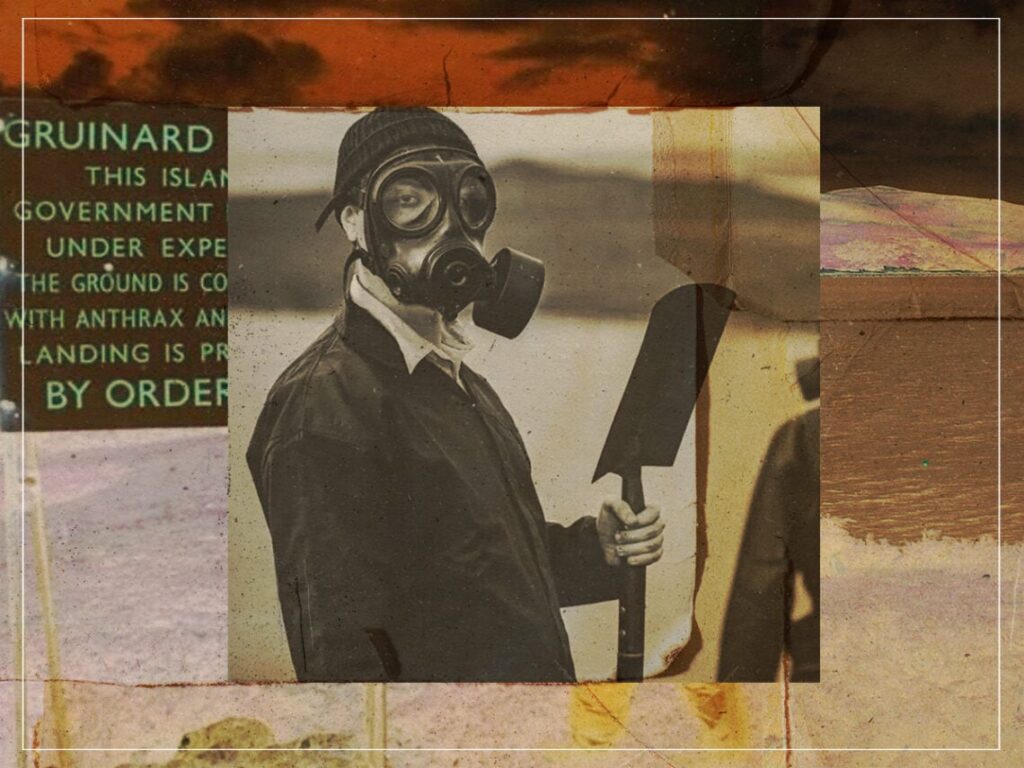Gruinard: Britain’s mysterious island of death
 Posted On
Posted On
(Credits: Far Out / Indelible Telly / Kevin Walsh)
Everybody loves a mystery story, but when it comes to the mysteries and cover-ups of the 20th century, the stories are usually limited to the secrecy of Russia’s Iron Curtain or the blacked-out classified documents of the CIA. As it turns out, though, little old Britain has its own fair share of skeletons in the closet. From proposing the detonation of a nuclear bomb on the North Yorkshire moors to the various secret underground army bases that may or may not exist. One such mystery, which has been thumping away under the floorboards of the nation for over 80 years, is the remote Scottish island of Gruinard – known locally as the ‘island of death’.
Mysterious deaths on a remote Scottish island sounds like the plot of a low-budget horror B-movie or the ramblings of a particularly obscure conspiracist. However, these seemingly bizarre events became a reality during the 1940s at the request of the British government. It was during this time that the government and Ministry of Defence were seemingly fielding any and every suggestion on how the nation could change the tides of the Second World War. Although the RAF had witnessed a considerable victory for the Allied forces during the ‘Battle of Britain’ in 1940, the Nazi forces were still on the front foot by 1942. As a result, drastic measures were seen as a necessity.
One of the more extreme measures the Ministry of Defence began experimenting with during this time was chemical warfare. After the devastation caused by poisonous gases used during World War I, chemical warfare was forbidden by the Geneva Convention in 1925; but that did not seem to stop the British Army from researching biological warfare for use against the Nazis. In 1942, scientists and researchers at Porton Down, under the instruction of the Ministry of Defence, began to research the potential of using anthrax in aid of the war effort.
Nowadays, most people are aware of the dangers of anthrax – an infection caused by bacteria spores which are passed on via inhalation or contact with the skin. Back in 1942, however, we were not as knowledgeable on the subject, and so the British government had to take some fairly extreme measures to conduct research into the topic. This brings us to the remote Scottish island of Gruinard, one kilometre away from the Scottish mainland in the Inner Hebrides.
The government wanted to research the possibility of damaging the German countryside and, by extension, its food chain. It aimed to achieve this by dropping anthrax bombs on the farmlands of Germany, and so they took control of the land of Gruinard to conduct a mock bombing in order to evaluate the effects of the biological weapon. So, 80 sheep were taken to the island, only for bombs armed with a particularly strong strain of anthrax, known as ‘Vollum 14578’, to be detonated.
Unsurprisingly, the sheep all became infected by the anthrax and subsequently died in the days following the detonation. Inhabitants of nearby islands found that many of their animals also died after the cloud of anthrax spores travelled with the wind, causing the British government to reimburse the costs of said animals. However, those inhabitants were completely unaware of what had gone on in Gruinard. Indeed, only a handful of people knew the truth prior to the declassification of documents relating to the experiment during the 1990s.
After the war came to an end in 1945, the original landowners of Gruinard sought to buy their island back, but the government and scientists recognised that the anthrax experiment had left the island completely uninhabitable. It was not until 40 years later, in 1986, that the government made an effort to try and decontaminate the island, spraying 280 tonnes of formaldehyde over Gruinard. In the process, however, the formaldehyde also contaminated the sea around the island, killing off a lot of seaweed and crustaceans, therefore damaging the local ecosystem.
To this day, the island remains uninhabited, but in 1990, it was deemed officially safe and returned back to the original landowners at the cost of only £500. A recent wildfire which ravaged the island in 2022 likely helped to rid the land of the last of any kind of contamination, but the anthrax experiments on Gruinard remain some of the most bizarre and damaging experiments Britain has ever conducted on its own soil.
[embedded content]


